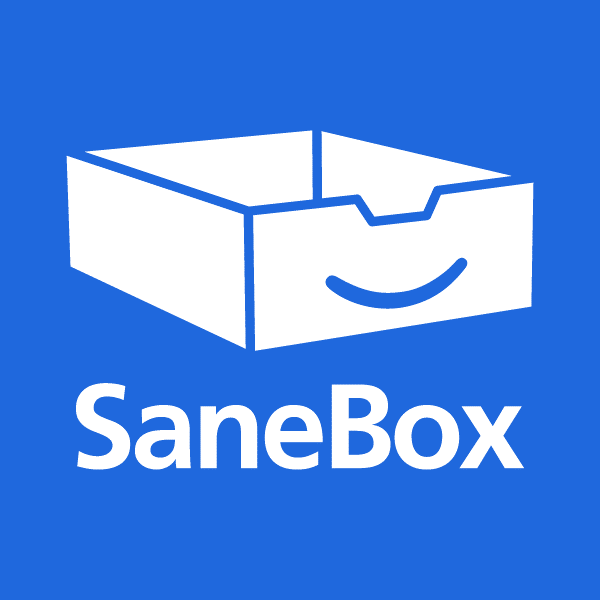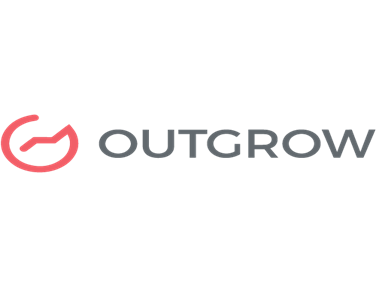Unlock the Secrets to Starting a Profitable Knitting Business: Learn How to Make Your Knitting Business Successful with These Helpful Tips
Written by Glenna Gonzalez, Professional Marketer and Public Relations

Positioning Your Knitting Business for Success
Welcome to the world of creative entrepreneurship, where the soothing click-clack of knitting needles transforms into the rhythmic heartbeat of a profitable venture.
Embarking on the journey of starting a knitting business is not just about crafting beautiful yarn creations; it is about weaving together your passion for knitting with a savvy business mindset.
We have laid out the essential steps to launch and nurture a successful knitting enterprise. From selecting the finest fibers to mastering marketing strategies, we will guide you through the intricacies of turning your love for knitting into a lucrative and fulfilling business.
Get your needles and join us on this journey into the realm of a profitable knitting business. We have laid out the steps for you here.
1. Define Your Niche
Starting and running a profitable knitting business requires a combination of creativity, business acumen, and strategic planning.
Identifying and defining your niche is a crucial step in creating a successful knitting business.
Your niche is your specialization within the broader market, allowing you to focus your efforts and tailor your products to a specific audience.
When choosing a niche, consider your own interests, skills, and the demand in the market.
For example, you might specialize in handmade baby items, eco-friendly knitwear, or unique and modern knitting patterns.
This specialization sets you apart from generic competitors and helps you target the right audience.
When evaluating your target audience, consider factors such as age, gender, lifestyle, and preferences. This knowledge will guide your product development, marketing strategies, and overall business approach.
Additionally, a well-defined niche allows you to become an expert in a specific area, building credibility and trust with your customer base.
As you establish your brand within a niche, word-of-mouth referrals and customer loyalty become more achievable, contributing to the long-term success of your knitting business.
2. Use Quality Materials
The quality of the materials you use in your knitting projects is a cornerstone of a successful knitting business. Invest in high-quality yarns, needles, and any other materials required for your products.
Quality enhances the visual appeal of your creations and contributes to the durability and overall value perceived by your customers.
When choosing materials, consider texture, colorfastness, and sustainability factors.
Eco-friendly options are increasingly popular, and using ethically sourced materials can attract environmentally conscious consumers.
Educate your customers about the materials you use. Highlight the benefits of the chosen yarn or other components, such as softness, warmth, or hypoallergenic properties.
This adds value to your products and demonstrates transparency, building trust with your customer base.
Presenting a variety of materials allows you to cater to different preferences and budgets. Keep abreast of trends in the yarn and knitting supply industry, as incorporating new and popular materials can further differentiate your products and keep what you offer fresh and exciting for your customers.
By consistently delivering high-quality products, you establish a reputation for excellence that can contribute significantly to the profitability of your knitting business.

3. Develop Unique Designs
Developing unique and original knitting designs is a key factor in making your knitting business stand out in a crowded market.
Your designs are your signature, setting your products apart from mass-produced or generic alternatives.
Experiment with various stitches, patterns, and color combinations to create distinctive pieces that highlight your individual style.
Consider the trends in the knitting world, but also infuse your personality and creativity into each design.
Keep in mind that innovation does not always mean complexity; sometimes, simplicity and elegance can be just as captivating.
In addition to creating unique designs, consider offering customization options for your customers.
This could involve personalized color choices, sizing options, or even incorporating initials or names into your knitted items.
Providing a degree of personalization adds sentimental value for the customer and makes your products more exclusive.
Exclusive designs and customization can justify higher prices, appealing to customers who appreciate the craftsmanship and individuality of handmade items.
Regularly update your design portfolio to keep your offerings fresh and cater to evolving consumer preferences, ensuring your knitting business remains relevant and enticing.
4. Build a Strong Online Presence
Building a strong online presence is key for the success of your knitting business in today’s digital age. Create a professional and visually appealing website where customers can easily browse and purchase your products.
Ensure your site is user-friendly, with clear navigation, high-quality images, and detailed product descriptions.
Obtaining an online store allows you to reach a global audience by expanding your customer base beyond local areas.
Utilize social media platforms to highlight your knitting creations and engage with potential customers.
Platforms like Instagram, Pinterest, and Facebook are particularly effective for visual-based businesses like knitting.
Share behind-the-scenes glimpses of your creative process, highlight completed projects, and interact with your audience through comments and direct messages.
Leverage social media marketing strategies such as contests, giveaways, and collaborations to increase visibility and attract new customers.
Consistency in your online presence, including regular updates and engagement, helps build brand awareness and loyalty.
Additionally, consider incorporating e-commerce features directly into social media platforms to streamline the purchasing process for your customers. An effective online presence boosts sales and enhances your brand’s credibility and accessibility in the competitive world of handmade goods.

5. Implement Social Media Marketing
Social media platforms offer powerful tools for promoting your knitting business and connecting with your target audience.
Implement a strategic social media marketing plan that aligns with your brand and business goals.
Create visually appealing content that highlights your knitting products in various settings and styles.
Use high-quality images and engaging captions to tell the story behind each piece.
Consider creating a content calendar to maintain a consistent posting schedule. Be sure to use relevant hashtags to increase the discoverability of your posts.
Engage with your audience by responding to comments, messages, and sharing user-generated content.
Encourage your followers to share their own knitting projects using your patterns or products, creating a sense of community around your brand.
Consider collaborating with influencers or other businesses in the crafting and handmade niche to expand your reach.
Social media platforms offer advertising options. This allows you to target specific demographics, ensuring your content reaches those most likely to be interested in your knitting projects.
6. Build an Email List
Build an email list as this is a valuable strategy for maintaining a direct line of communication with your customers. Incentives, such as discounts or free patterns, encourage visitors to subscribe to your email list.
Once you have a list of subscribers, use email marketing campaigns to share updates, announce new product launches, and promote special promotions or sales. Be sure to personalize your emails to make customers feel valued and appreciated.
Segment your email list by relevant criteria. This allows you to tailor your messages to specific groups, increasing the relevance of your email marketing strategy.
Pay attention to analytics that help you track the performance of your email campaigns. This includes open rates and click-through rates. Use this data to refine your strategies over time.
Building a strong and engaged email list provides you with a loyal customer base and a direct channel to promote your knitting business.
This also helps you to drive sales and foster long-term relationships with your customers.

7. Provide Excellent Customer Service
Provide excellent customer service. This is an important aspect of running a successful knitting business.
It goes beyond just selling products; it involves creating a positive and memorable experience for your customers. Respond promptly to customer comments, questions, and concerns, whether they come through your website, social media, or email.
Clear communication and attentiveness build trust and enhance the overall perception of your brand.
Always address any issues or concerns professionally and be willing to find a satisfactory resolution.
Go the extra mile to exceed customer expectations. This could involve handwritten thank-you notes with each purchase, offering surprise discounts or freebies, or providing care instructions for your knitted items.
By prioritizing customer satisfaction, you increase the likelihood of repeat business and positive word-of-mouth recommendations.
Satisfied customers are more likely to become loyal patrons and potential brand advocates who significantly contribute to the growth of your knitting business.
8. Offer Customization
Providing customization options for your knitting products adds a delicate touch and sets your business apart.
Customers appreciate the ability to personalize their purchases, whether it is choosing specific colors, adding initials, or selecting from assorted sizes.
Offering customization caters to individual preferences and allows you to charge premium prices for personalized, one-of-a-kind items.
This customization can be a powerful marketing tool, as customers are more likely to share their unique creations on social media, attracting attention to your brand.
Implementing a straightforward and user-friendly customization process is essential.
Clearly communicate the available options and guide customers through the decision-making process.
Consider showcasing examples of customized items on your website and social media to inspire potential buyers and do not forget to choose a good website host.
Gather customer feedback to continue improving and expanding your customization offerings based on popular requests.
By embracing personalization, you enhance the value of your products and create a deeper connection with your customers, who may continue to be loyal and sources for repeat business.

9. Participate in Craft Fairs and Markets
Attending local craft fairs, markets, and events provides an excellent opportunity to highlight your knitting products in person, connect with potential customers, and gain valuable feedback.
Craft fairs attract individuals interested in handmade and unique items, creating a target audience for your knitting business. Ensure your booth or display is visually appealing and representative of your brand.
Use signage, business cards, and other promotional materials to direct attendees to your online presence, encouraging future engagement.
Engage with visitors to your booth, sharing information about your knitting process, materials, and the story behind your creations.
Offering live demonstrations or allowing customers to touch and feel the quality of your products can create a memorable experience.
Get contact information, such as email addresses, from interested attendees to build your email list and keep them informed about future events and product releases.
Participating in local events boosts immediate sales and enhances brand visibility within your community, potentially leading to long-term customer relationships.
10. Collaborate with Other Businesses
Collaborate with local businesses or artisans as this can be mutually beneficial and expand your reach. Identify complementary businesses, such as a boutique, a coffee shop, or a florist, and explore partnership opportunities.
For example, you could highlight and sell your knitting products in a local boutique or collaborate on a themed collection with another artisan.
Cross-promotions, where each business promotes the other, can introduce your products to a new audience. Additionally, consider joint events or workshops that combine your knitting expertise with the offerings of another business.
Collaborations can also extend to online platforms. Partner with influencers or bloggers in the crafting and lifestyle niche to reach a broader audience.
These collaborations can involve product reviews, sponsored posts, or joint giveaways.
Leveraging each other’s audiences can increase brand awareness and potentially drive traffic to your online store.
Successful collaborations boost sales and provide opportunities for creative exchanges, networking, and resources that contribute to your knitting business’s overall growth and profitability.

11. Optimize Pricing
Pricing strategy is important for the profitability of your knitting business. It is essential to find a balance between covering your costs, making a profit, and offering competitive prices in the market.
Begin by calculating the cost of materials, your time investment, and any additional overhead costs associated with your business.
Determine a reasonable profit margin to ensure sustainability and growth. Consider researching the prices of similar handmade knitting products in the market to understand the competition.
While pricing your products, also consider your brand’s perceived value. If you use high-quality materials, offer unique designs, or provide customization options, these factors contribute to the overall value of your products.
Communicate the value proposition to your customers through your marketing materials and product descriptions.
Review and adjust your pricing strategy periodically based on changes in material costs, market trends, and the evolving perception of your brand.
Do not undervalue your work, as setting prices too low can undermine the perceived quality of your products and impact the overall profitability of your knitting business.
12. Manage Inventory and Finances
Effective inventory management and financial planning are essential for the success of your knitting business.
Track your inventory levels to avoid overstocking or running out of popular items.
Consider implementing an inventory management system to monitor stock levels, track sales trends, and make informed purchasing decisions.
This helps prevent tying up too much capital in unsold inventory and ensures you can meet customer demand.
In terms of finances, maintain a clear and organized record of your income and expenses.
Accounting software usage or an accountant will help you keep accurate financial records.
From time to time, review your financial statements to check the profitability of your business, identify areas for cost optimization, and plan for future investments or expansions.
Budgeting and financial planning are key to sustaining and growing your knitting business.
Understanding your costs, managing cash flow effectively, and making informed financial decisions contribute to your venture’s long-term success and profitability.

13. Continuous Learning
In the dynamic world of knitting and handmade crafts, staying abreast of trends, techniques, and styles is paramount for the success of your business.
Dedicate time to continuous learning by attending workshops, taking online courses, and participating in knitting communities.
Engaging with other knitters and artisans provides opportunities to exchange ideas, gain insights, and stay inspired.
Learning new techniques or incorporating fresh styles into your designs keeps your products relevant and appealing to a broad audience.
Consider expanding your skill set beyond traditional knitting methods.
Experiment with several types of yarn, explore alternative knitting tools, and incorporate diverse stitches into your repertoire.
This enhances your creativity and allows you to offer a wider range of products to cater to different tastes.
Continuous learning can be a source of inspiration for developing innovative designs, setting you apart from competitors and attracting customers who appreciate the craftsmanship and uniqueness of your creations.
Additionally, sharing your learning journey through social media or blog posts can enhance your brand story, highlighting your dedication to growth and improvement.
creations. Additionally, sharing your learning journey through social media or blog posts can enhance your brand story, highlighting your dedication to growth and improvement.
Here are two national organizations that you may be interested in:
Beyond technical skills, staying informed about market trends, consumer preferences, and emerging technologies in the crafting industry is crucial.
Attend trade shows, read industry publications, and follow relevant blogs to stay informed. Understanding the broader market enables you to make educated decisions about your products, marketing strategies, and business development.
Continuous learning benefits your personal growth as a knitter and positions your business for long-term success in a rapidly evolving marketplace.
Lastly, remember that building a profitable knitting business takes time and dedication.
Consistency, quality, and a strong connection with your customers are key elements for long-term success.
We hope that the tips provided for you here will serve as a great jumping-off point for you to move forward with getting your knitting creations and tools into the hands of people around the world, while making you an incredibly happy business owner in an ever-growing hobby and art space.
Keep on the lookout for other articles from us that discuss other aspects of creating and maintaining a business, or other discussions on other growing entrepreneurial fields.
Good luck!





























